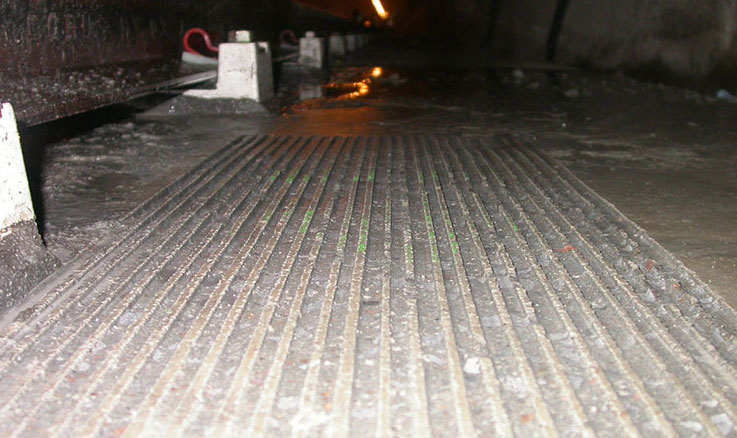

The grinding of roads consists in rectifying corrugated surfaces of the roads. A thin layer is removed of the roadway, that containing the undesirable unevennesses and/or ruts, while preserving the profile of the road. The advantages of this technique are numerous. Here are some:
Construction S.R.B scc has a range of specialized equipment meeting to the specific needs of its customers.
The grooving of roads uses the same type of equipment as grinding but allows a different final texture, answering to a quite different problem.
Over time, the concrete roads, viaducts and bridges wear and become increasingly smooth, thus reducing the adherence of the road.
Grooving increases the long-term adhesion coefficient and reduces considerably the noise of rolling which one can perceive on a concrete road. This procedure is complementary to grinding since the grooving does not correct the profile of the roadway.
The grooving of highway is carried out on almost all of the highways and the tracks of airports of the United States. Although Canada is slow to follow the step, the benefits of this procedure were proven by numerous studies carried out by International Grooving & Grinding Association. These studies can be read on the website of association.
The grinding or the grooving a floor of cattle shed aims at increasing the adhesion coefficient of a concrete slab. This economic solution consists in removing a thin concrete layer (1/8 '' - 1/4 '') to apply a plain and non-skid texture to it. The result is a clear reduction of the injuries of livestock, extremely expensive factor for the farmers.
Grinding with diamond also makes it possible to prepare an inadequate surface with the application of a membrane, correcting the profile, small spalls and applying a uniform texture. Once the work carried out, the slab which had accommodated asphalt before, is now ready to receive the membrane.
